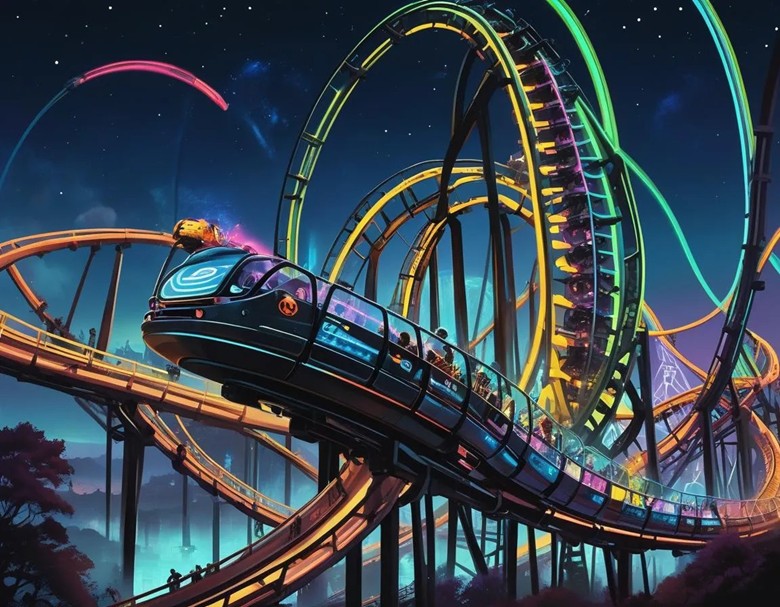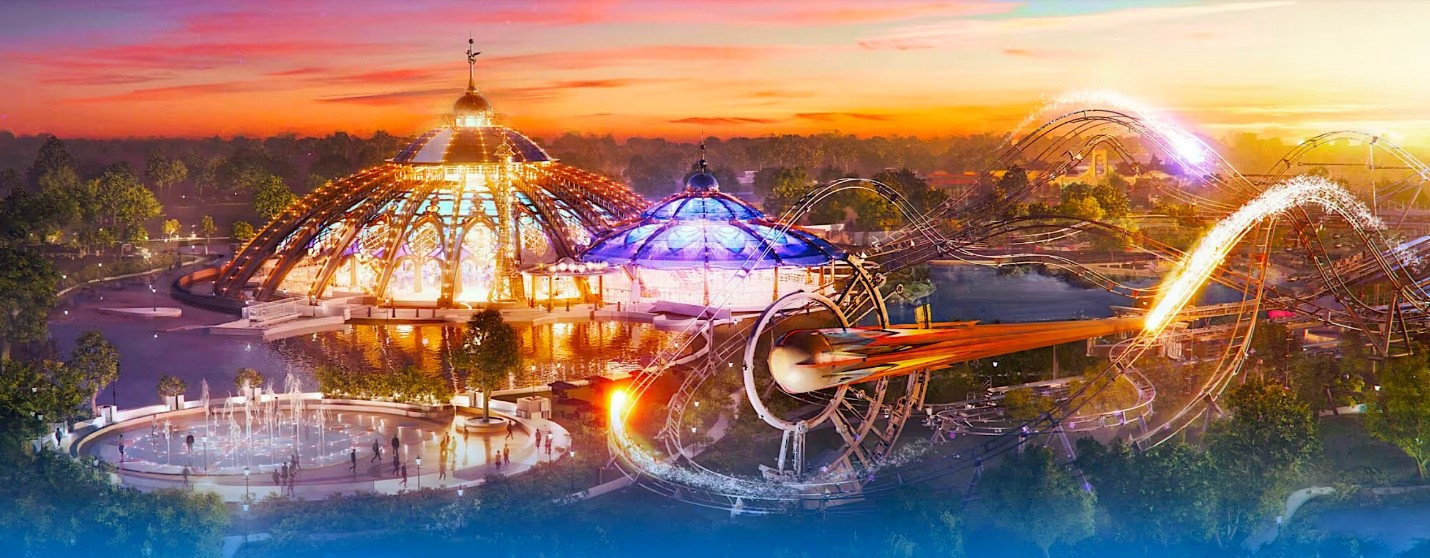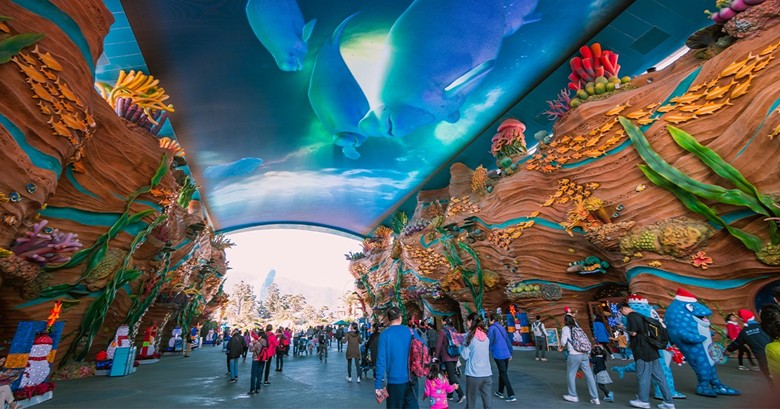
Blogs
Mastering Theme Park Layouts: The Ultimate 2025 Guide
Designing a theme park is a unique and exciting challenge that requires an in-depth understanding of the target audience, the right mix of attractions, and the perfect spatial design. Whether you are designing a brand-new park or redesigning an existing one, mastering the theme park layout is crucial for delivering a memorable experience to visitors. In this 2025 guide, we’ll delve into how theme park layouts are conceptualized, how to divide the area into zones, how to balance attractions for different age groups, and what new trends and technologies are shaping the industry.
Conceptualizing the Theme Park Layout
A well-thought-out theme park layout is the backbone of its success. It involves a balance between creativity, functionality, and visitor flow. The layout is often divided into multiple zones, each focusing on different themes, attractions, and age groups. These zones are designed to ensure that visitors enjoy a seamless experience, without feeling overcrowded or overwhelmed.
One common approach is dividing the park into thematic areas based on a central concept—be it adventure, space, nature, or fantasy. Each zone is carefully crafted to evoke a specific atmosphere, complemented by corresponding attractions, architecture, and even the landscaping. For instance, a futuristic zone might feature space-age rides and cutting-edge technology, while a fantasy zone could be a whimsical land filled with fairytale-inspired attractions.

Dividing the Area into Zones
Effective zoning helps create a coherent flow and ensures that visitors experience a balanced mix of thrill, fun, and relaxation. The park layout is usually divided into several key areas:
- Thrill Zones: These are the areas dedicated to high-adrenaline rides such as roller coasters, drop towers, and 4D simulations. Thrill-seekers of all ages will flock to these zones for the excitement they provide.
- Family Zones: These areas offer more relaxed, family-friendly attractions that can be enjoyed by visitors of all ages. Rides here are generally milder but still fun and engaging, such as boat rides, Ferris wheels, or interactive experiences.
- Children’s Zones: Designed specifically for younger visitors, these zones feature gentle rides, play areas, and educational experiences. Attractions are safe, colorful, and entertaining for children, allowing families to have a stress-free visit.
- Relaxation Zones: These zones provide guests with spaces to rest and recharge. They may include lush gardens, cafes, quiet areas, and even small interactive zones where people can take a break from the bustling excitement of the park.
- Entertainment and Event Zones: Hosting live shows, parades, and seasonal events keeps the park dynamic and ensures that visitors return time and time again. These zones can also be used for temporary installations, festivals, or rotating exhibitions.

Balancing Attractions for Different Age Groups
One of the most significant challenges in designing a theme park layout is ensuring that there are attractions for all age groups. Visitors range from toddlers to seniors, and their needs vary greatly. Here’s how to strike the right balance:
- For Kids: Include gentle rides like carousels, interactive play areas, and mini roller coasters. It’s also essential to have themed shows or educational exhibits that keep children entertained and engaged.
- For Adults: High-intensity thrill rides and immersive experiences are a must. For adults, roller coasters, virtual reality experiences, and simulators can provide the adrenaline rush they’re looking for.
- For Seniors: While senior citizens may not be as enthusiastic about intense thrill rides, it’s crucial to offer activities they can enjoy, such as relaxing boat rides, scenic train tours, or cultural exhibits that add value to their visit.
The Perfect Combination of Rides, Attractions, and Technology
Modern theme parks are evolving rapidly, with technology playing an increasingly important role in enhancing the guest experience. The key to a successful park layout in 2025 is integrating innovative technologies with traditional rides and attractions. Here’s how to create a perfect combination:
- Cutting-edge Rides: Virtual reality (VR) and augmented reality (AR) are changing the way we experience rides. VR roller coasters, for example, allow guests to experience an entirely new level of immersion. Incorporating such experiences adds a futuristic edge to your theme park.
- Indoor Attractions: With weather unpredictability in mind, incorporating indoor attractions can keep visitors entertained year-round. This can include indoor roller coasters, gaming zones, or digital experiences that allow guests to enjoy the park regardless of the weather outside.
- Changing Events and Carnivals: Hosting seasonal events or rotating exhibits can encourage repeat visitors. For example, special holiday celebrations, carnivals, and themed festivals keep the park fresh and exciting. Offering a rotating schedule of events ensures there’s always something new to experience, keeping visitors coming back.
- Interactive Technology: Mobile apps, interactive maps, and digital wristbands can enhance the visitor experience. Smart wristbands can help track ride wait times, suggest attractions based on preferences, and even offer cashless payments throughout the park.
Trends in the Theme Park Industry for 2025
As the theme park industry continues to evolve, several exciting trends are expected to dominate in 2025:

- Sustainability: Green initiatives, such as energy-efficient rides and eco-friendly building practices, are becoming increasingly important. Theme parks are investing in renewable energy sources and reducing their environmental footprint.
- Personalization: Data-driven personalization will allow for customized visitor experiences, offering recommendations based on past visits or preferences.
- Increased Integration of AI: Artificial intelligence is revolutionizing the way theme parks manage crowds, provide guest services, and create interactive experiences.
- Immersive Theming: Parks are focusing on creating completely immersive environments, often blending physical and virtual worlds to provide next-level storytelling.
- Health and Wellness: Theme parks are introducing wellness zones, offering yoga sessions, spas, and healthy dining options to attract health-conscious visitors.
5 Recent and Innovative Theme Parks
- Epic Universe (USA): A new Universal Studios theme park under development that promises groundbreaking attractions, including cutting-edge virtual experiences and expanded immersive lands.
- Disneyland Shanghai (China): A combination of traditional Disney magic and advanced technology, offering unique experiences like the TRON Lightcycle Power Run.
- EPCOT 2.0 (USA): The ongoing reimagining of EPCOT at Walt Disney World introduces new futuristic pavilions, innovative tech-based rides, and sustainability-themed attractions.
- Legoland New York (USA): This park takes advantage of Legos’ flexibility, featuring massive interactive installations and a theme that appeals to all ages.
- Motiongate Dubai (UAE): A park blending Hollywood storytelling with immersive rides, including state-of-the-art virtual reality experiences and live-action stunts.
How Peach Prime Consultancy Can Help
At Peach Prime Consultancy, we specialize in designing and executing world-class theme parks that are not only visually stunning but also functionally optimized for visitor flow and experience. With our expertise in creating the perfect balance of thrilling attractions, immersive theming, and innovative technology, we can help bring your theme park vision to life. Whether you are starting from scratch or upgrading an existing park, we offer bespoke solutions tailored to your unique requirements.





